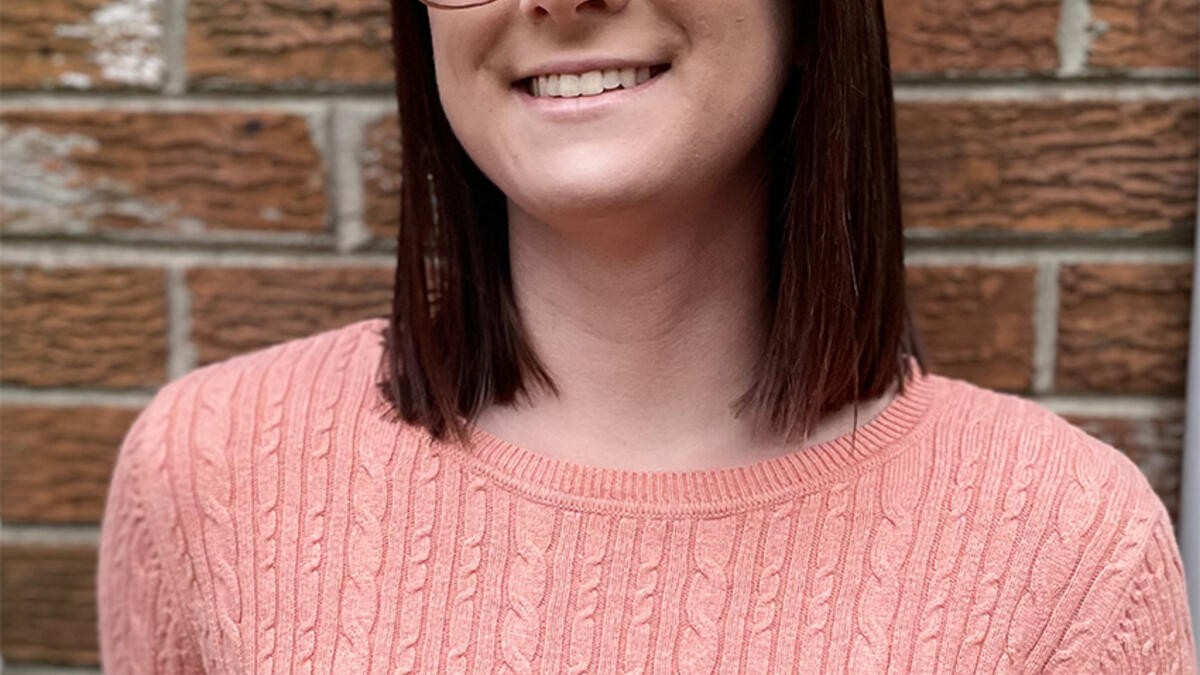Editor's note: This story is part of a series of profiles of notable spring 2021 graduates.
The vastness of space can be hard to comprehend. So much of it has yet to be explored. But when it comes to what we do know about the universe, one of the biggest challenges is space policy.
Space isn’t governed by one group or country. Collaboration between agencies is needed to make decisions and negotiate different interests because what happens in space affects life on Earth. It’s a complex issue that’s become the subject of ASU May 2021 graduate Jenna Robinson’s research.
“I’ve been interested in science and space since I was young,” said Robinson. “My interest in policy came along while earning a Bachelor of Science in earth and space exploration (astrobiology and biogeosciences) in the School of Earth and Space Exploration. I realized that science has politics to it. Growing up, I just assumed that science was neutral. But as I learned more, especially about the funding process, I realized that there is a lot of unjust politics involved in science. That’s why I decided to focus on policy.”
To learn more about that policy, Robinson joined the Master of Science and Technology Policy (MSTP) program at the School for the Future of Innovation in Society in the College of Global Futures. The program allowed her to get different perspectives on her research.
“I liked that the program was open to people of all backgrounds and wasn’t just recruiting scientists or people with policy backgrounds. Professors genuinely wanted a diverse group of students because they wanted to have those hard conversations at the intersection of science, ethics and political science. That was something I was drawn to.”
Robinson’s research has focused on space resource governance and different policy methods for creating a space resources institute. She participated in the Space Governance Lab, a research group that’s part of the Interplanetary Initiative, which studied governance issues — the laws, norms, rules and best practices involved in the sociopolitical decision-making process — in space. She worked on the lunar authority project, studying terrestrial analogs for informal resource governance on the moon. She now has the opportunity to take her work to the federal level as a Presidential Management Fellows finalist. She hopes to get a posting with NASA, where she can continue her work in space policy.
“I want to continue broadening perspectives in the space science and space policy community. I think we're doing a good job of making those strides now, but there are improvements we can still make. We need to continue working to ensure that it's a more equitable and more diverse community.”
Question: Why did you choose ASU?
Answer: ASU made it a really welcoming experience. During my senior year of high school, I visited campus and was asked if there were any professors I'd like to meet. I had been reading a book by Professor Jim Bell and mentioned I would like to meet him. He’s a notoriously busy professor, but ASU went out of its way to set up a meeting. That was huge for me. I appreciated that ASU and Professor Bell put in the effort to make that happen.
Q: What’s something you learned while at ASU — in the classroom or otherwise — that surprised you or changed your perspective?
A: The biggest thing that surprised me was when I took a science, technology and inequality class and learned just how much inequality is involved in science and technology. Before that class, I had a naive perception that science and technology are only good and always benefit society. I had never paused to consider that there could be negative elements to them. That was a big eye-opener and a large part of what drew me to researching that policy.
Q: Which professor taught you the most important lesson while at ASU?
A: Assistant Professor Jennifer Richter has been a driving force in my master's education. She helped open my eyes to different perspectives that you need to look at when you're considering policies. She taught me about the inequalities in science and also informed me about Indigenous perspectives and environmental justice, which are big lenses that I've since incorporated into my work.
Q: What’s the best piece of advice you’d give to those still in school?
A: Keep going. There were many points in the past year, especially with the pandemic and changing life circumstances, where it would have been easy to give up or push something off. It’s worth it just to sit down, put in the effort, pause for a bit if needed, and keep going.
Q: If someone gave you $40 million to solve one problem on our planet, what would you tackle?
A: I would tackle the American education system because I think a lot of problems could be solved by creating a better, more equitable and more diverse education system. That would include teaching the true history of Indigenous people, so we don't continue perpetuating these colonialist ideologies, and incorporating more arts, so students have more creative thinking processes. I think that could go a long way in solving many other problems like climate change and job inequities.
More Science and technology
Largest genetic chimpanzee study unveils how they’ve adapted to multiple habitats and disease
Chimpanzees are humans' closest living relatives, sharing about 98% of our DNA. Because of this, scientists can learn more about…

Beyond the 'Dragon Arc': Unveiling a treasure trove of hidden stars
NASA's James Webb Space Telescope (JWST) has set a new milestone: capturing images of over 40 individual stars in a galaxy so…

ASU selected as home and partner for CHIPS and Science Act-funded national facility for semiconductor advanced packaging
Following a week where a spirited effort by the Sun Devil football team captured the nation’s attention in the Peach Bowl, it is…
